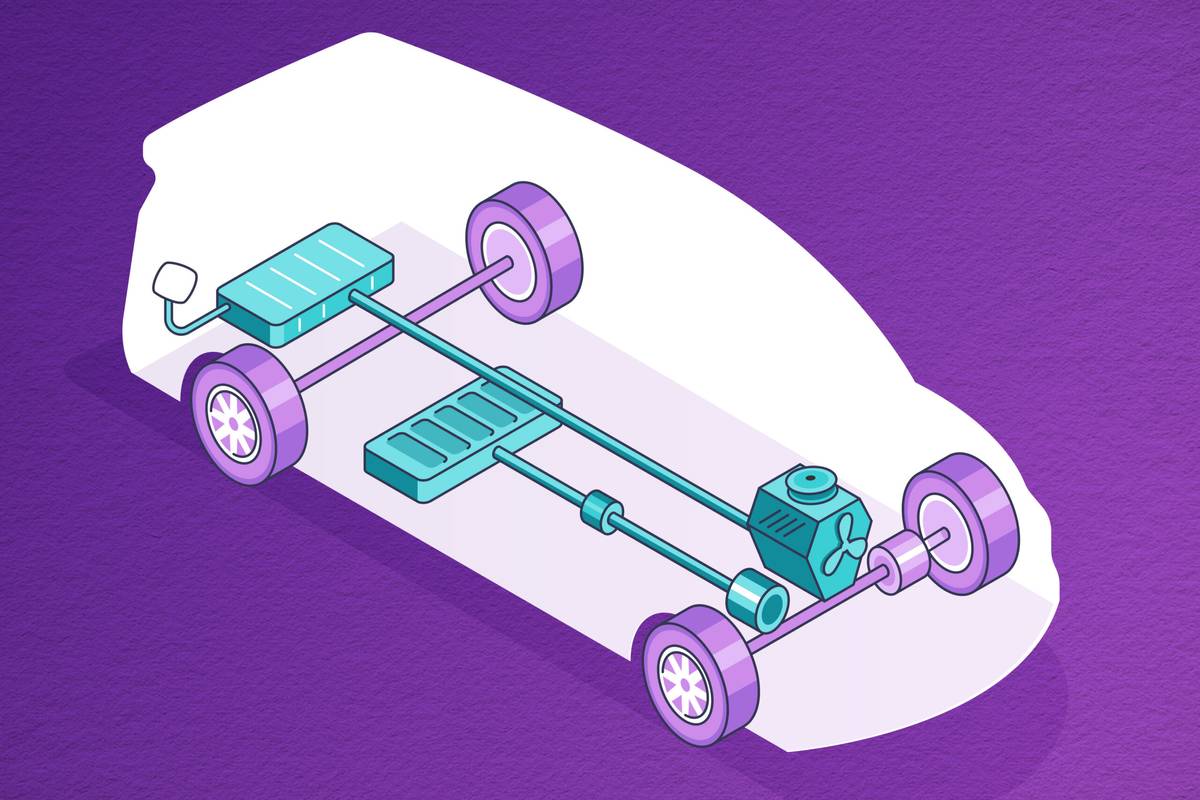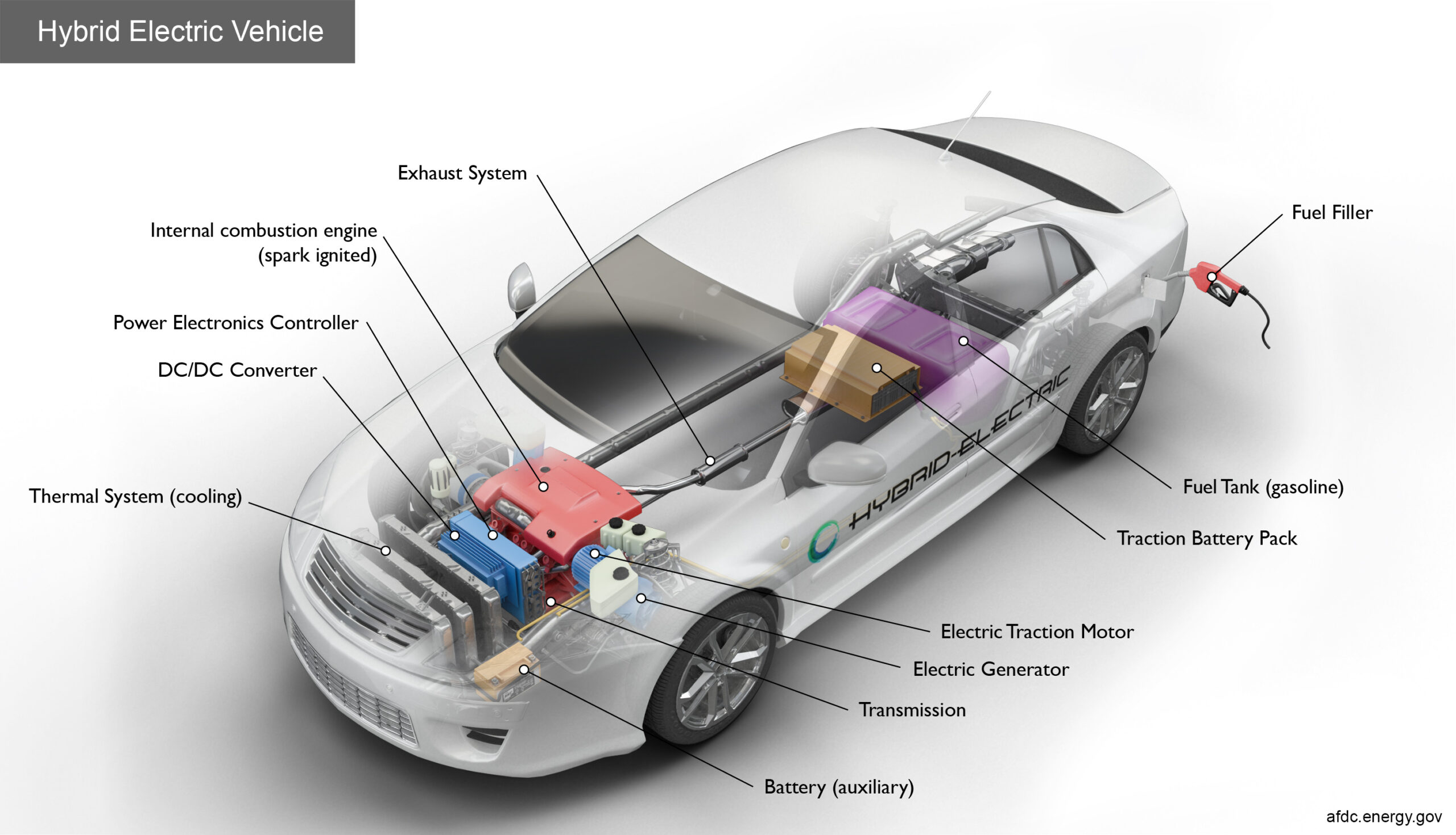A hybrid car combines an internal combustion engine with an electric motor to improve fuel efficiency. The engine charges the battery while driving.
Hybrid cars use both gasoline and electricity to power the vehicle, resulting in reduced emissions and better gas mileage. These vehicles switch between the two power sources based on driving conditions, such as city or highway driving. The electric motor assists the engine during acceleration, and the battery recharges through regenerative braking.
Overall, hybrid cars offer a more environmentally friendly and economical driving option compared to traditional gasoline-powered vehicles. By utilizing both gasoline and electric power, hybrid cars achieve improved fuel efficiency and reduced emissions, making them a popular choice for eco-conscious drivers.
Contents
The Evolution Of Hybrid Cars
Hybrid cars have come a long way since their inception, evolving from early innovations to modern vehicles that have gained widespread popularity. Understanding the evolution of hybrid cars can provide insight into their technology and the factors driving their increasing adoption.
Early Innovations In Hybrid Technology
Early experiments with hybrid technology can be traced back to the late 19th century, with the invention of the first gasoline-electric hybrid vehicle by Ferdinand Porsche in 1900. This pioneering creation laid the groundwork for further advancements in hybrid propulsion systems.
- The introduction of regenerative braking systems in the 1960s
- Development of the first mass-produced hybrid car, the Toyota Prius, in 1997
- Integration of advanced battery technology for improved energy storage and efficiency
Modern Hybrid Vehicles And Their Popularity
The 21st century has witnessed a significant surge in the popularity of hybrid vehicles, driven by a growing emphasis on environmental sustainability and fuel efficiency. Modern hybrid cars combine internal combustion engines with electric propulsion systems to deliver enhanced performance and reduced emissions.
Factors Contributing to the Popularity of Modern Hybrids:
- Advancements in hybrid drivetrain technology
- Government incentives and regulations promoting eco-friendly transportation
- Increasing consumer awareness of environmental impact and fuel economy

Credit: m.youtube.com
Key Components Of A Hybrid Car
A hybrid car uses a combination of an internal combustion engine and an electric motor to power the vehicle. This innovative technology is made possible by the key components that make up a hybrid car. In this section, we will discuss the three main components of a hybrid car, which are the internal combustion engine, electric motor and battery pack, and the regenerative braking system.
The Internal Combustion Engine
The internal combustion engine in a hybrid car is similar to the engine found in a traditional car. It is responsible for powering the wheels and generating electricity for the battery pack. However, the difference is that the engine is smaller and more efficient in a hybrid car. It is also designed to work with the electric motor to optimize fuel consumption and reduce emissions.
Electric Motor And Battery Pack
The electric motor and battery pack are the heart of a hybrid car. The electric motor uses electricity stored in the battery pack to power the wheels and assist the internal combustion engine. The battery pack is rechargeable and can be charged by the engine or through regenerative braking. The electric motor and battery pack work together to provide a more efficient and eco-friendly driving experience.
Regenerative Braking System
The regenerative braking system is a unique feature of hybrid cars. When the brakes are applied, the system captures the kinetic energy that is normally lost in traditional cars and converts it into electricity. This energy is stored in the battery pack and can be used to power the electric motor. The regenerative braking system helps to improve fuel efficiency and reduce emissions.
The Working Mechanism Of Hybrid Cars
Hybrid cars are becoming increasingly popular due to their ability to combine the benefits of both gasoline engines and electric motors. Understanding how hybrid cars work can help us appreciate their energy efficiency and reduced emissions. In this article, we will delve into the working mechanism of hybrid cars, focusing on energy conversion and storage, driving modes, and fuel efficiency.
Energy Conversion And Storage
Hybrid cars utilize both internal combustion engines and electric motors to convert and store energy. The internal combustion engine, fueled by gasoline, generates power by burning fuel. This power is then used to propel the vehicle and charge the electric motor’s battery.
On the other hand, the electric motor runs on electricity stored in a battery pack. When the vehicle is in motion, the electric motor assists the internal combustion engine, providing additional power and reducing fuel consumption. During deceleration or braking, the electric motor acts as a generator, converting the kinetic energy into electrical energy and storing it in the battery for later use.
Driving Modes In Hybrids
Hybrid cars have different driving modes that determine how the power is delivered to the wheels. The most common driving modes in hybrids are:
- Series Mode: In this mode, the internal combustion engine solely powers a generator, which charges the battery. The electric motor then draws power from the battery to propel the vehicle, while the engine remains disconnected from the wheels.
- Parallel Mode: In parallel mode, both the internal combustion engine and the electric motor work together to propel the vehicle. The power from both sources is combined and sent to the wheels through a transmission.
- Power-Split Mode: This mode combines elements of both series and parallel modes. The power from the internal combustion engine is split, with a portion directly powering the wheels and another portion charging the battery. The electric motor also assists in propelling the vehicle.
Fuel Efficiency And Emissions Reduction
One of the primary advantages of hybrid cars is their fuel efficiency and reduced emissions. By using the electric motor in combination with the internal combustion engine, hybrids can achieve higher miles per gallon (MPG) compared to conventional gasoline-only vehicles. The electric motor’s assistance allows the engine to operate at its most efficient RPM range and reduces the overall fuel consumption.
Additionally, the use of electric power during low-speed or stop-and-go driving reduces the vehicle’s emissions. Hybrid cars produce fewer greenhouse gas emissions and help in reducing air pollution, making them a more environmentally friendly option.
In conclusion, hybrid cars operate by efficiently converting and storing energy through the combination of internal combustion engines and electric motors. The various driving modes in hybrids provide flexibility in power delivery, while the fuel efficiency and emissions reduction make them an attractive choice for eco-conscious drivers.

Credit: afdc.energy.gov

Credit: www.cars.com
Frequently Asked Questions
Here are some FAQs about hybrid car –
What Is The Downside Of Hybrid Cars?
Hybrid cars have higher upfront costs and may have limited electric-only range. Maintenance and repairs can be pricier.
What Happens If A Hybrid Runs Out Of Gas?
If a hybrid runs out of gas, it will switch to its electric motor or battery power. The gas engine will stop running, but the car will continue to operate on electric power until the battery is depleted. It’s important to refuel as soon as possible to ensure the hybrid can switch back to using gasoline.
At What Speed Does A Hybrid Switch To Gas?
A hybrid car switches to gas when the battery charge reaches a certain level. This varies depending on the make and model of the car, but usually happens at speeds around 25-30 mph.
Can You Run A Hybrid Car On Gas Only?
No, a hybrid car cannot run on gas only. It requires both gas and electric power to operate.
Conclusion
Hybrid cars offer an eco-friendly and cost-effective alternative to traditional vehicles. By combining internal combustion engines with electric motors, they reduce fuel consumption and emissions. Understanding how hybrid cars work can help individuals make informed choices for a sustainable future.
Embracing this technology can lead to a cleaner and more efficient transportation landscape.
